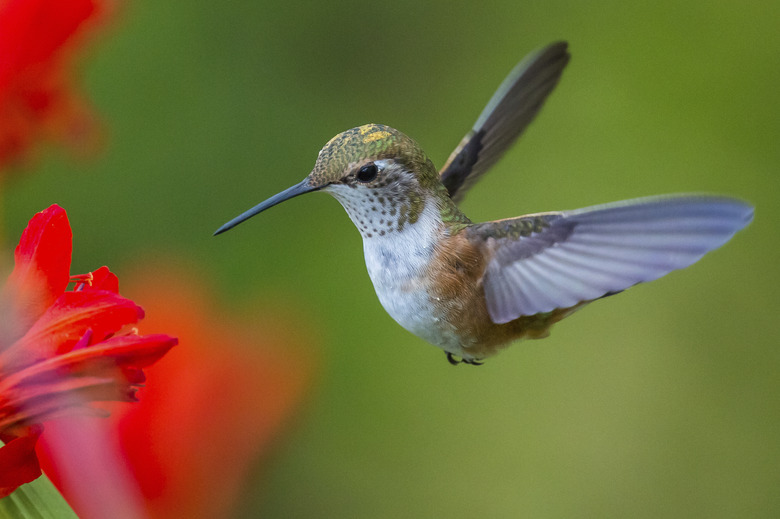Why Won't Hummingbirds Come To My Feeder?
If hummingbirds are in your area, they'll likely visit any feeder you put out for them—provided they can find it. If these delightful little birds aren't visiting your feeder, it may be that they haven't noticed it yet, or it might be that the nectar blend you're offering isn't ideal. To attract hummingbirds, try altering the location of the feeder or abandon fancy nectar blends in favor of a basic sugar water solution that provides much-needed calories for them.
If you don't notice hummingbirds right away, be patient. Sometimes the birds are nesting or they may already have plenty of flower nectar to feed on— your feeder may not be the top destination on their list at the moment. Or, it's possible you've put the feeder out at the wrong time of year. If you are patient, you should see hummingbirds in time.
Location, Location, Location
Location, Location, Location
Hummingbirds won't visit a feeder if they don't know where to find it. If you know hummingbirds are in the area but they don't seem to be visiting your feeder, move the feeder to an area near flowering plants, or to an area where you've noticed hummingbird activity before. If you've never seen hummingbirds in your yard—even though you know they're in the neighborhood—try planting flowers that attract them near your feeder. Or, hang cut flowers from hooks in your porch or from a shepherd's hook in an area near the feeder.
Make sure the selected location is out of the reach of cats and positioned in the shade where your hummingbird nectar will stay fresher longer. Experiment by placing several hummingbird feeders in your yard in locations far apart to determine which one works the best.
Deal With Bullies
Deal With Bullies
Sometimes a male hummingbird may find your feeder and decide to claim it as his own. If so, he may chase off other hummingbirds. To solve bully bird problems, place multiple hummingbird feeders out of sight of each other. If other birds can't see the bully, they won't be intimidated by him. You can also try placing several feeders in one grouping to attract more hummingbirds. In this situation, an aggressive male may find himself outnumbered and stop his territorial bullying.
Add a Touch of Red
Add a Touch of Red
While hummingbirds visit and drink nectar from flowers and feeders of all colors, they're especially drawn to shades of red. Use a feeder that has a bit of red on it, such as fake red flowers. Tie a red ribbon on the feeder or its hanger to draw even more attention to it. Add another ribbon to a nearby tree or location where hummingbirds can spot it from afar. Do not use red food coloring in the nectar, however, as this may be harmful to the hummingbirds.
Test Different Feeders
Test Different Feeders
Hummingbird feeders come in a variety of shapes and styles, so if the hummingbirds aren't visiting a feeder in your yard, it's possible that they're not familiar with your style of feeder. If you notice that other feeders in the neighborhood are attracting hummingbirds, by a similar feeder for your own yard. Or, you can test two different styles at once, placing them apart from one another to see which one is preferred Some hummingbirds favor one type of feeder over another, while others visit any feeder that has fresh nectar. Ultimately, an easy-to-clean feeder is an appropriate option to start with.
Have the Right Recipe
Have the Right Recipe
Although hummingbirds usually favor natural flower-based nectar over homemade solutions, a blend of sugar and water serves as a great substitute. You'll need the right recipe to attract hummingbirds to your feeder. Mix 1 part white sugar with 4 parts water, and boil the solution for two minutes, stirring to dissolve the sugar completely. Once the solution cools, store it in an airtight container in the refrigerator, where it will stay fresh for up to two weeks.
Do not use honey, artificial sweeteners, or other types of sugars, as they may be harmful to hummingbirds or may ferment. Fill the feeder half full of nectar and change the nectar every three to four days. During warm weather, the nectar may need to be changed more frequently to prevent mold. Wash the feeder out each time before changing the nectar by rinsing it with hot water. Do not use harsh chemicals such as bleach, which may be harmful to hummingbirds.
